Our Verdict
Nails the look, the sound, and the speed, but Redout stalls on the sensation.
PC Gamer's got your back
What is it? A futuristic hover racer in the mould of F-Zero and Wipeout, also playable in VR.
Expect to pay: £27/$30
Developer: 34BigThings
Publisher: 34BigThings
Reviewed on: Intel i7 x980 3.33GHz, 9GB RAM, Nvidia GeForce GTX 980 Ti
Multiplayer: Online
Link: Official site
There’s no adequate yardstick with which to measure the screaming pace of this futuristic anti-gravity racer. Imagine the fastest you've ever traveled. The slowest you go here is basically ten times that. Yardsticks are irrelevant. The product of a team so fed up of waiting for a new F-Zero or Wipeout they decided to make their own, this racing game plays like an open love letter to both written in UV paint.
The general aim is bombing down each course in bids to finish before your competitors, but there are exceptions: Arena Race is a weapons-based mode sans respawns which rages until one ship’s withstood all damage unleashed by shield-sapping power-ups and ram-happy rivals. Speed is about staying above a target pace to knock seconds off your time, while Score deals points for hitting turbos and achieving fastest laps, Boss is an imaginative endurance sprint linking multiple tracks together via teleporter, and the punishing Instagib turns wall damage deadly. There’s decent variety but Race is what you’ll return to, featuring three short laps against aggressive opponents. It’s what Captain Falcon would have wanted it, rest his soul.
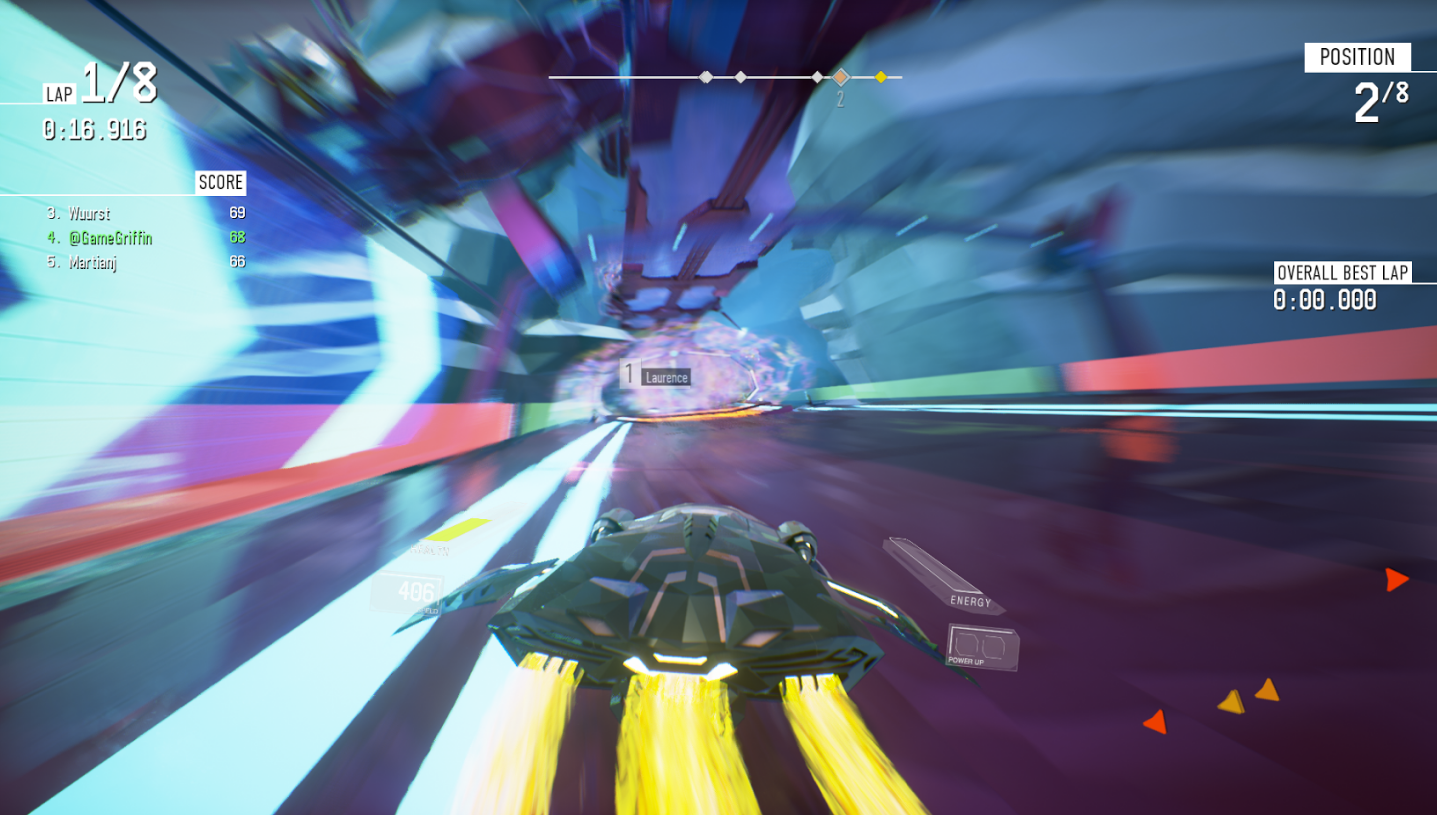
If you’ve ever wondered what 900km/h is, it’s buildings whizzing by like they’ve been slicked in oil and flung down a supermarket aisle. It’s shiny exhausts emanating snaking trails of luminous neon that hang in the air, stubbornly contesting the speed of light. A shaking camera emulates eye-watering velocity by blurring at the sides and permitting a small pinhole of sight in the centre, while a pounding dynamic soundtrack accelerates as you do.
At 120fps, blisteringly swift events play out like an extended Inception kick, but they’re quick to restart after losses, too. That’s useful, because Redout is a racer that demands you learn track layouts, each twist and turn committed to memory and possibly practiced in the bath like an overly dedicated bobsledder. The sharp low-polygon style is bold and readable early on, with trackside featuring smoking volcanoes, giant pink blossom trees, decaying cities, and blazing dust storms, but the horizon starts to melt and congeal into a colourful splodge as you gain traction.
That’s why there are two necessary concessions. The first is course design that, although soaring you over Cairo jumps, winding you through Alaskan loops, and corkscrewing you like shampoo swirling down a plughole, serves up the same basic lane type. It’s flat, shiny, narrow, and flanked by so many walls you feel more like a bowling ball than a pilot blessed with superhuman reflexes. The second is somewhat simplistic handling that looks better than it feels, often about constant throttling with occasional prods of the right stick/arrow keys to strafe around particularly nasty corners. Floaty weight plagues normal car racers, so imagine how worse that is when these vehicles actually levitate.
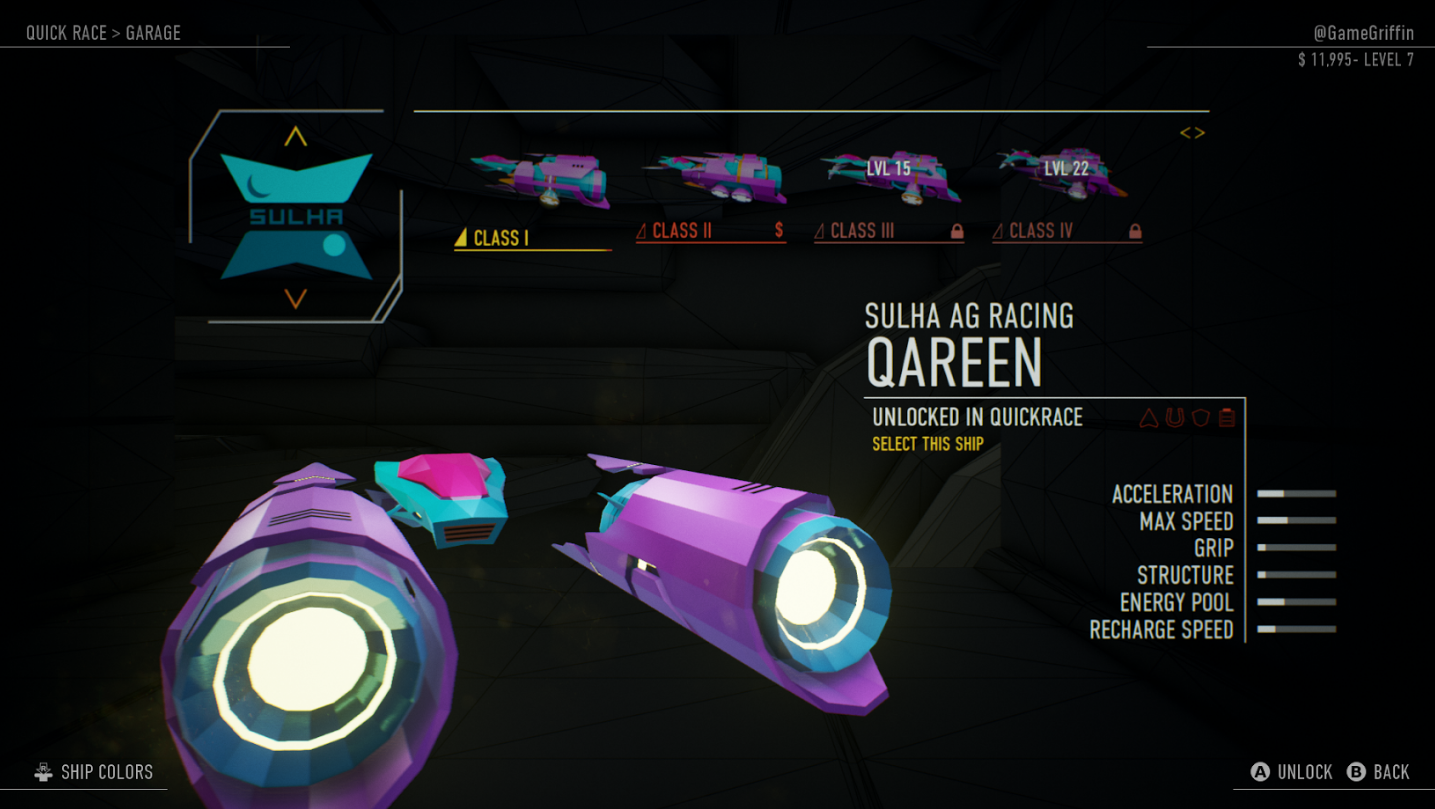
Different ships have different ratings and you can sample the range in a well-structured career that gives you cash to purchase new ones and upgrade them, provided you make the podium. It’s essentially a big mixed playlist swerving between game types and courses with such regularity it’s hard to be bored. Controls vary nicely, too. On tracks with long straights you’ll want the nippy vanguard, for example, and in more congested tracks a sturdy centaur excels.
Career offers a hook that means you’re frequently earning money to road-test a new and creatively designed rig, whether it’s a Podracer-like dual engine assemblage tethered by cables or something that looks like an American hot rod by way of The Fifth Element. Encountering tracks multiple times means you’ll soon memorise them, and perfectly tackling a turn at mach ten feels incredibly good.
You can also purchase power-ups and bolt a pair onto your craft. There are X/spacebar-triggered EMP blasts, energy drains, repair drones, and more passive magnetic stabilizers and enhanced respawns, but sadly the interplay is more awkward than aggressive, feedback lacking power and violence. You’re never waiting for the perfect moment to unleash a projectile or readying shields for an impending impact, only reeling off what amounts to a puny status effect with negligible bearing on a race’s outcome, so the implementation feels like an afterthought. A 12-person online multiplayer at least goes some way to capturing some hustle and bustle, although in my experience rooms fill up slowly.
Despite catapulting the genre into a new visual realm packing kinetic wallop, Redout also aptly demonstrates what little you can do with it. Fierce speed proves more a liability than asset in necessarily basic controls, weak weapons, and functionally samey track architecture.
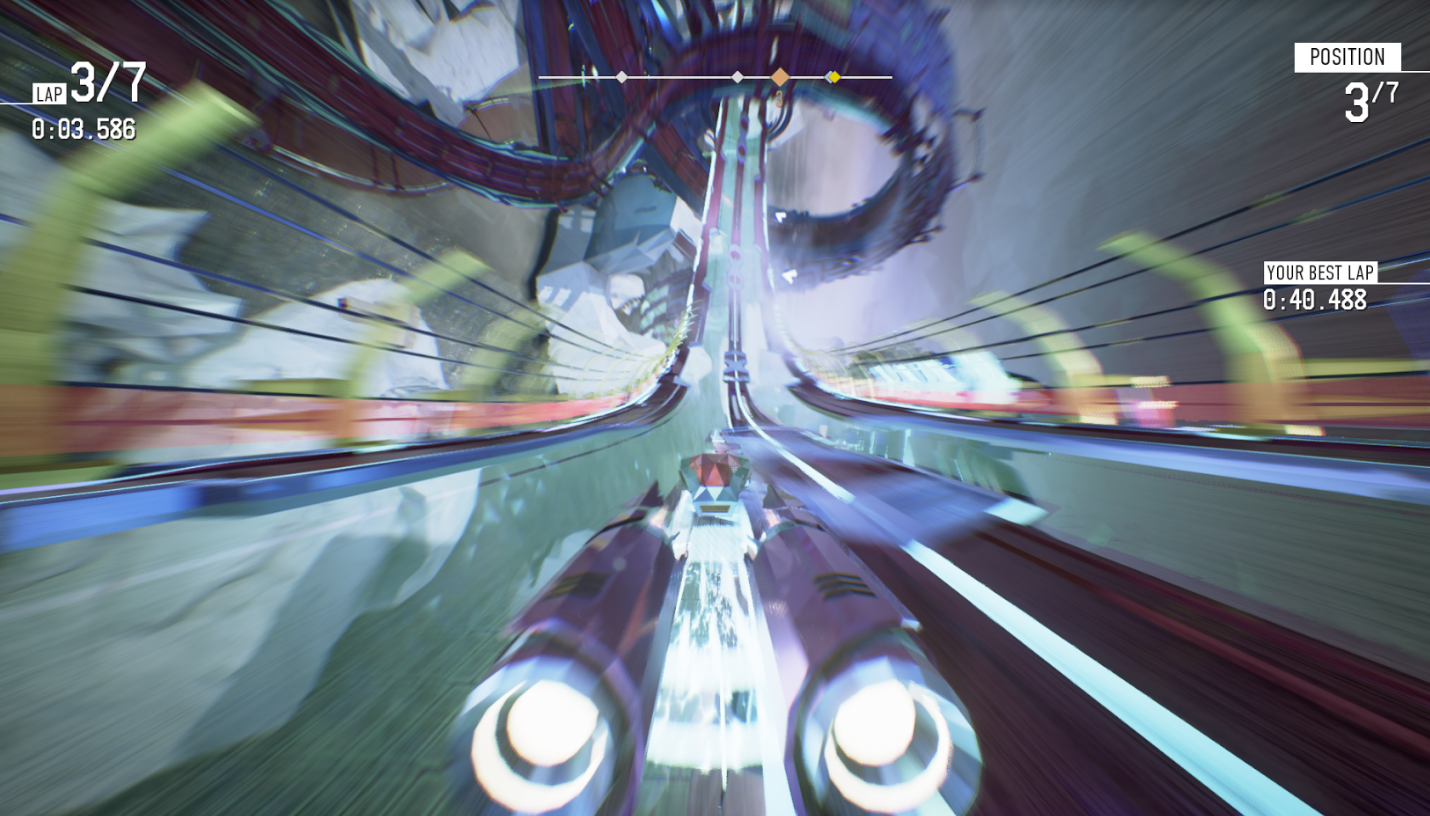

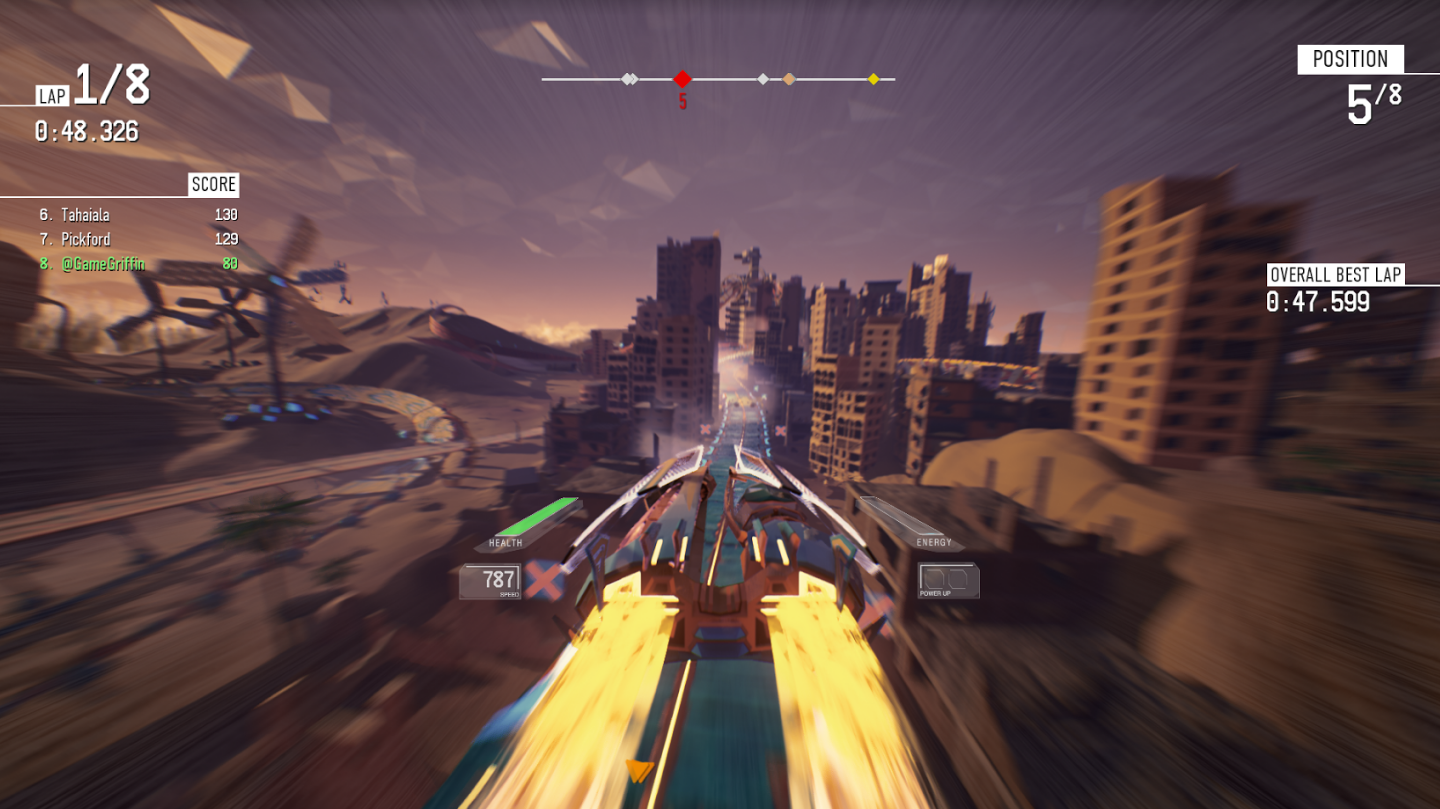

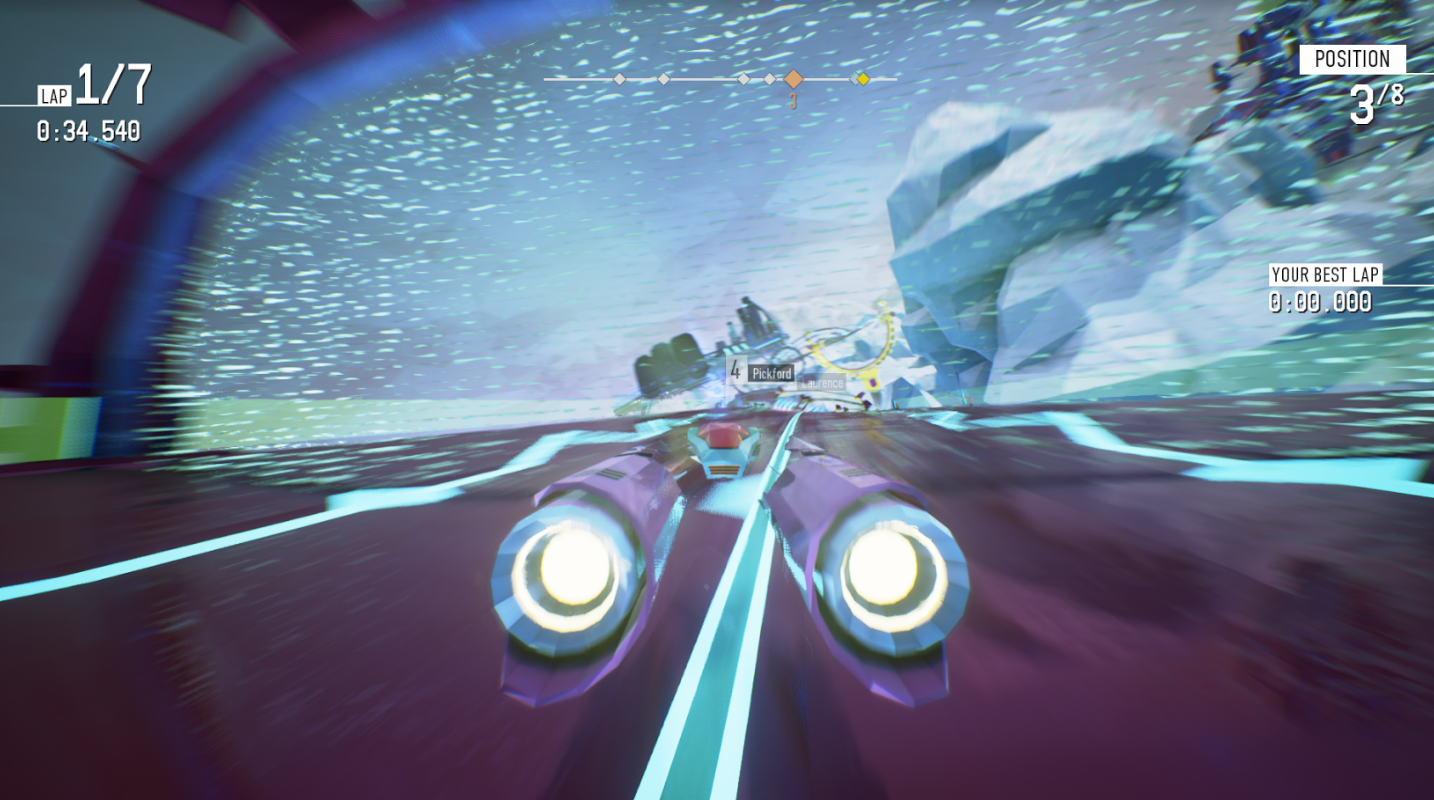
Nails the look, the sound, and the speed, but Redout stalls on the sensation.


